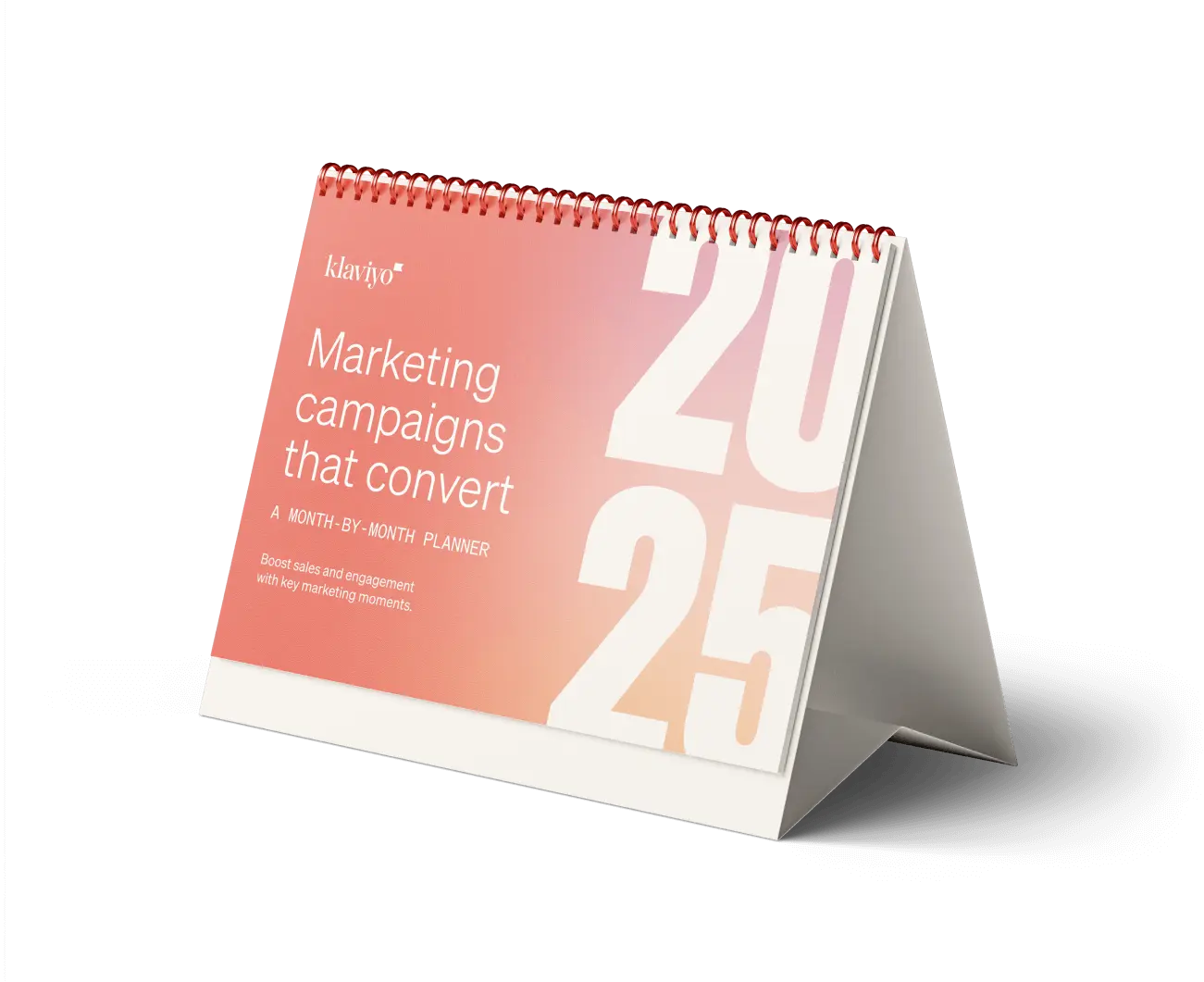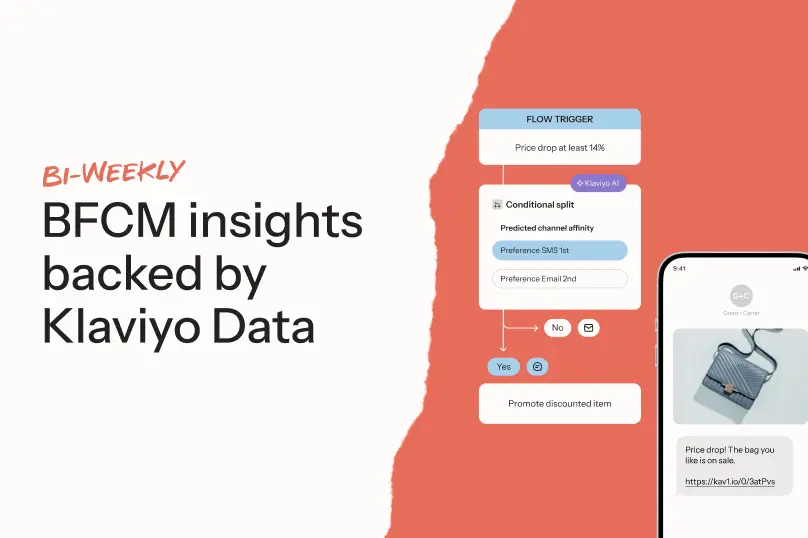Valentine’s Day is your January slowdown cost recovery plan. Here are 11 marketing ideas to make the most of it

You’ve recovered from the holiday frenzy and survived the January slowdown.
Now, it’s time to recoup some revenue with everyone’s favorite winter non-holiday: Valentine’s Day.
It may not be an official holiday, but Valentine’s Day is definitely a day to spend money. In 2023, the average American consumer budgeted $192.80 for Valentine’s Day—up 9.91% YoY. That number shot up to $280 each for people in the 35-44 age bracket.
As a marketer, how do you make the most of the occasion? Here are 11 creative ideas, even if your brand doesn’t fall into the typical jewelry, chocolate, and flowers Valentine’s Day categories.

1. Improve Valentine’s Day communication with data
No one wants to suffer through a date with someone who talks about themselves the entire time. The same principle applies to your website.
Sure–one goal of marketing is to sell your products. But the more questions you ask your customers, the more you can personalize your marketing content.
Direct-to-consumer (DTC) jewelry brand Maison Miru, for example, uses website forms to find out which precious metals their shoppers prefer. Turns out, most of their customers don’t mix their metals—they buy one exclusively. Based on that information, the brand segments their marketing audience accordingly, with one flow for gold jewelry and another for silver.
More form data collection ideas that can pay off come Valentine’s Day:
- Shopping for themselves or someone else
- Just browsing or looking for a specific gift
- Relationship status
- Gift budget range
- Product-specific preferences, like Maison Miru
- Anniversary date, so you can send future anniversary emails
If a customer indicates that they’re shopping for themselves, for example, enter them into a “treat yourself” marketing automation. Or, if a shopper checks “just browsing,” direct them to a gift guide.
2. Drive more conversions with smart shipping thresholds
It doesn’t take much to convince some customers to buy your products—they may fall in love at first sight. But others may need a bit more of a push to convert. The fiancé who’s saving for an expensive engagement ring, for example, will be grateful to save a few bucks when they place an order for the perfect gift this year.
Extra shipping costs frequently deter shoppers from completing the check-out process. To solve for this, try targeting shoppers with a low average order value (AOV)—people who may have browsed, but not purchased, products priced lower than your minimum for free shipping.
Then, offer these customers a promotional code for free shipping—and be sure to let them know whether there’s enough time for them to place their order and receive it by Valentine’s Day.
On February 12, you might also consider sending an “It’s not too late” email to engaged customers who still haven’t made a purchase. Offer them free two-day or overnight shipping, assuming you can guarantee shipping timelines.
“The ‘Last day to get your orders in time for a holiday’ blast is always a good one,” says Brandon Amoroso, founder and president of Electriq. “It’s expressing urgency, providing transparency, and is a real, hard deadline.”
The ‘Last day to get your orders in time for a holiday’ blast is always a good one. It’s expressing urgency, providing transparency, and is a real, hard deadline.
If you can’t guarantee shipping in time for the holiday, suggest items that don’t require shipping—like a gift card, a virtual painting night, or a wine tasting.
3. Sweeten Valentine’s Day with an incentive
Free shipping isn’t the only incentive that’s likely to convert on Valentine’s Day. Coupons, giveaways, and free gifts can move the needle as well.
Consider including a giveaway contest in your Valentine’s Day marketing email, and make sure to announce it in the subject line to boost your open rates.
Bag brand BEE & KIN earned a high open rate with this email, offering subscribers the chance to win a luxury backpack. Their strategy? A smart first impression in the subject line: “GIVEAWAY + Valentine’s Day edit ❤️.”

4. Make it easy for people to ask their partners for what they want
Some people don’t know where to begin when it comes to gift ideas for Valentine’s Day.
Instead of pushing your customers to make a purchase, try recommending that they tell their partners exactly what they want—and making it easy for them to share the love they have for your brand.
How? Here are a few ideas:
- Suggest that your customers forward your email to their loved one.
- Encourage recent new customers to share the love by posting user-generated content (UGC) on social media platforms.
- Offer an option for your customers to share a registry on your site—the same way people do for weddings and baby showers.
5. Create an expert Valentine’s Day gift guide
Gift guides are two strategies in one: They position your brand as a trusted advisor, while also giving your customers gift ideas based on your inventory.
One of the best ways to strike gold with this Valentine’s Day marketing and CRM strategy is to crowdsource a gift guide from your team, complete with headshots and quotes.
With this email, Trade Coffee earned a high open rate thanks to a straightforward subject line: “Our Valentine’s Day Gift Guide.” The brand sent the email a solid week before Valentine’s Day, with a clear shipping deadline.

6. Re-engage your ex-customers with a win-back email
While your ex may have ghosted you, your previous customers might be a little more receptive to your overtures—if the offer is right.
For customers who purchased from you last February but haven’t bought from you since, now’s the perfect time to put a Valentine’s Day win-back series into action.
Whether they’re last-minute shoppers or they’ve been planning for the holiday weeks in advance, customers who purchased for Valentine’s Day last year might appreciate a limited-time reminder to buy.
A few ideas on how to make your win-back email shine:
- Include a countdown timer to create a sense of urgency—someone whose significant other always forgets important dates will thank you.
- Segment past purchasers by AOV and suggest products in a similar price range. (This method is also great for abandoned cart emails, since you’re more likely to convince a customer who’s browsing men’s dress shirts to buy a pair of pants than a gold watch.)
7. Give your VIP customers early access to a Valentine’s Day deal
No one wants to be slighted on Valentine’s Day. Be sure to give your most loyal customers access to your best Valentine’s Day sales and deals before anyone else.
Here’s what that might look like:

Set up a content marketing calendar for VIPs that includes a preview or teaser of the sale before it goes live.
Send an informational email to your VIPs that announces when the sale will be, how long it will last, and what collections you’ll include.
Some customers might have a wandering eye for other brands, but that doesn’t mean you can’t change their ways. Notify engaged customers once the sale goes live, since they’re the ones who are most likely to check it out.
It’s just as important to take a hint when a customer just isn’t that into you. Exclude unengaged customers and non-opted-in contacts, and make sure you clean your email lists and SMS lists and double-check segments so the content you’re sending is relevant.
Creating small, highly segmented lists isn’t just better for engagement—it also ensures you’re giving people who want to hear from you the best possible experience. Send VIPs exclusive deals to make them feel like they’re your most important customer.
8. Adapt Valentine’s Day for your brand
When we think of Valentine’s Day, we typically think flowers, chocolates, and jewelry. But just because your brand offers products that aren’t traditionally romantic doesn’t mean you have to sit the holiday out.
No matter what your brand sells, you can still find a way to participate in the holiday with poetic copywriting, wistful imagery, clever product curation, or even just a charming GIF.
Athletic apparel, for example, may not be a romantic gift. But this loved-up email from Booty by Brabants offers a bottle of rosé along with a pair of the brand’s signature leggings for Valentine’s Day.

9. Lean into Galentine’s Day to expand your revenue potential
Remember: People aren’t only buying for their significant others on Valentine’s Day. They’re also buying for friends, children, parents, and even themselves.
The emergence of Galentine’s Day, especially, gives your brand the opportunity to significantly expand your marketing—and your revenue—without being redundant.
Take a look at this Galentine’s Day sale email from jewelry brand La Kaiser, which earned a high click rate by incorporating:
- A discount code for big savings (50% off)
- A cheeky, playful explanation of Galentine’s Day
- High-quality product images
- Well-placed CTA buttons, including one above the fold

10. Use SMS for last-minute Valentine’s Day marketing
Timing is everything—in love and in holiday marketing. It’s crucial to understand when to send an email campaign as opposed to a text message. But the opposite is true, too—when should you send a text instead of an email?
One SMS best practice: If your message is time-sensitive, SMS makes sense.
Sustainable goods brand Earth Hero earned a high click rate by sending this Valentine’s Day text just one day before the holiday. It’s a smart move: By this point, shoppers are under pressure to deliver a gift in the next 24 hours.

11. Send a self-love reminder for Valentine’s Day
Romantic love. Platonic love. Familial love. Love for nature. They all count for Valentine’s Day—and so does self-love. Brands have been marketing to better self-esteem for years now, with notable results.
But self-love can also be a vague, overdone concept. If you want to market using the idea, take a tip from Buti Yoga and spell out exactly how buying from your brand will help customers express theirs.

Buti Yoga earned a high click rate with this email challenging their audience to show themselves some self-love. The email contains clear, succinct descriptions of:
- The free offer
- How to enter the contest
- What the prizes are
The brand also places CTA buttons above the fold and at the bottom of the email—this way, they catch anyone who might not make it to the end.

Related content

Learn 5 ways to turn new holiday shoppers into repeat buyers using personalization, seamless returns, targeted outreach, and AI-driven customer experiences.

Learn what to include in your photography style guide to create consistent, on-brand visuals across your B2C marketing channels.

Shopping is about to hit its peak season. But this year’s surge will look different from those before it. Instead of impulsive buying sprees, shoppers are entering the holidays with a more deliberate mindset.